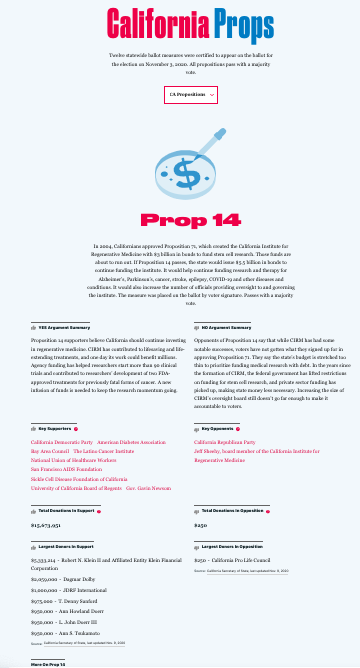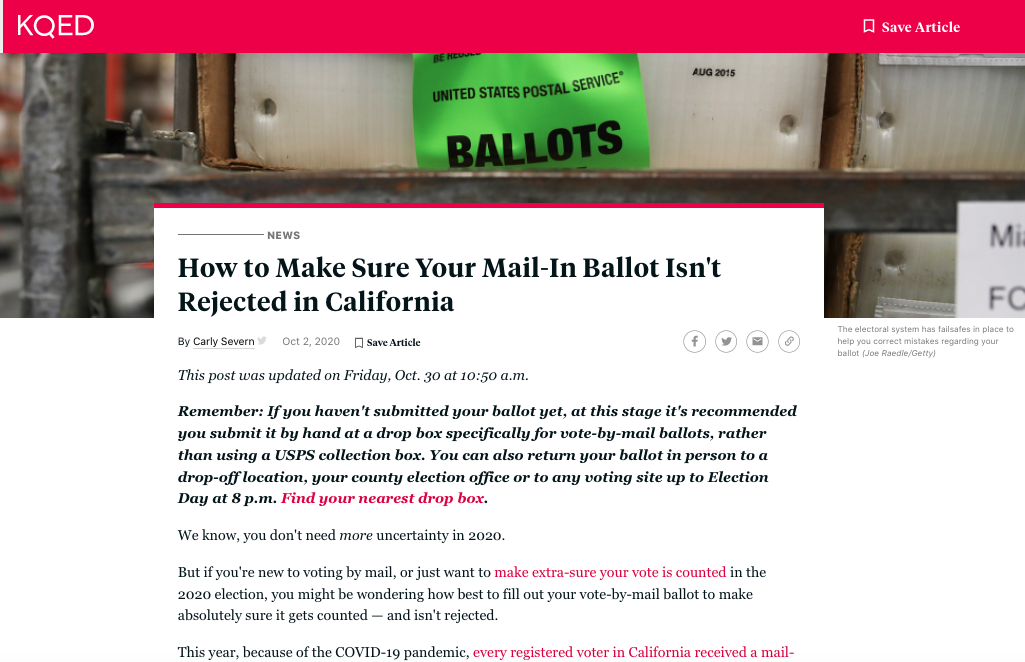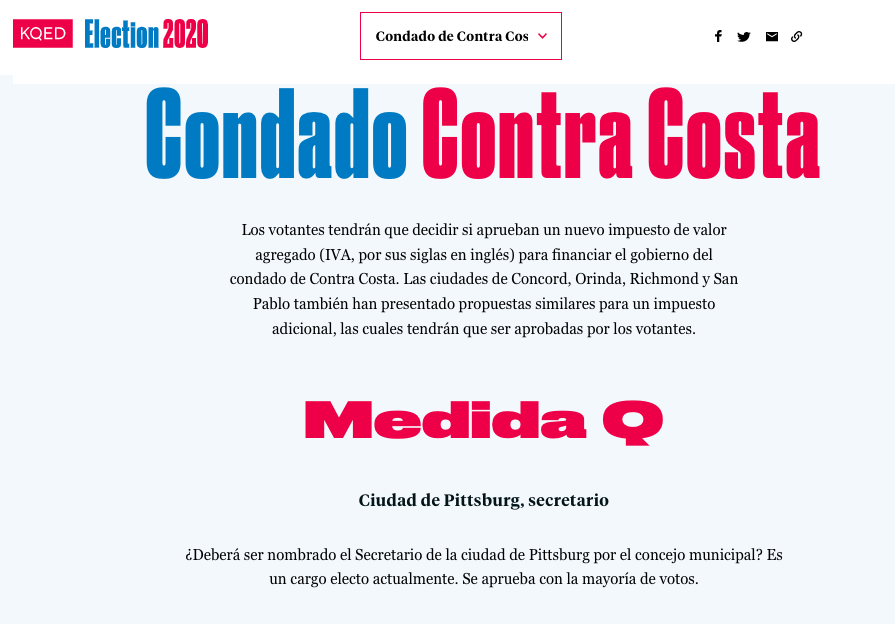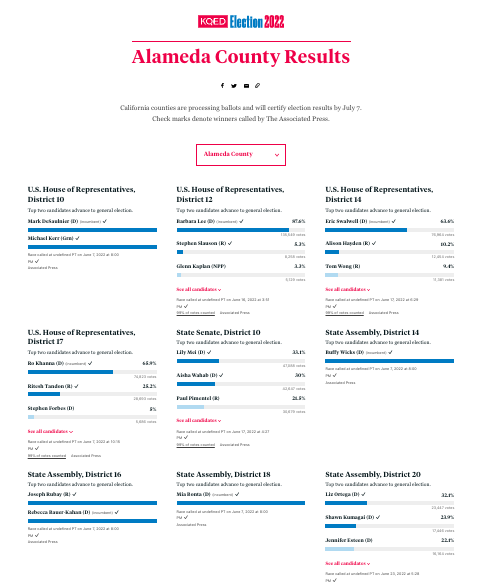Elections
I've helped cover elections at KQED for more than a decade. During all of these years I've brought an audience and local approach to my coverage plans, while building the tools to provide detailed voter guides and election results.



In 2012, I pitched KQED a statewide proposition voter guide that would briefly explain what the measure would do if implemented and give brief information on who was for or against it. In 2016, I began partnering with outside organizations like the California League of Women Voters, MapLight or Voter's Edge to help cover hundreds of local measures and races. We also began producing the guide for English and Spanish audiences. In 2020, we added live campaign finance data after much newsroom and audience demand.
Now, the voter guide is a cornerstone of KQED's digital and broadcast strategy in any election.
But I wanted more than a comprehensive guide, for years KQED had heard from local users that they wanted local results. In 2016, for national and state results I worked with the Associated Press to use their API. Then, I reached out to election registrars at the nine Bay Area counties and other local election officials to get live results feeds. For counties that did not have such feeds, we built scrapers, that were checked by a team of interns and producers on election night. Next I worked with our Product Department to build a clear way for users to find and sort the results for more than 800 local races and ballot measures. For the first time, users could find all their election results at KQED. The results were accessed more than 1 million times on election night alone. Then in 2018 and 2020 we were able to build on our previous work, and also began working more closely with professional data entry teams for difficult to scrape places.
Reporters and hosts also used the site for live, on-air coverage, instead of interns calling registrars, writing down the results and running them down the hall to the studio.
